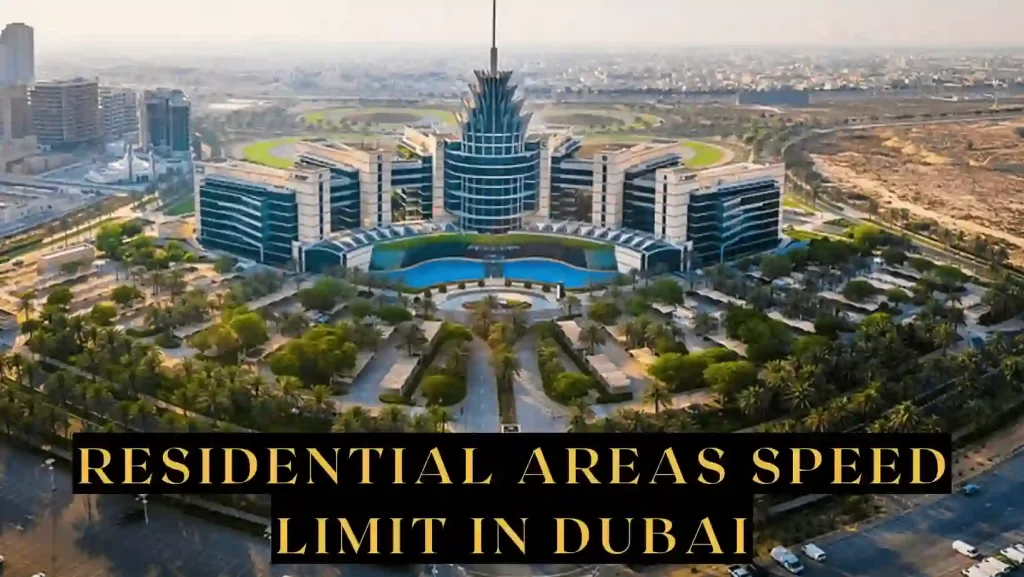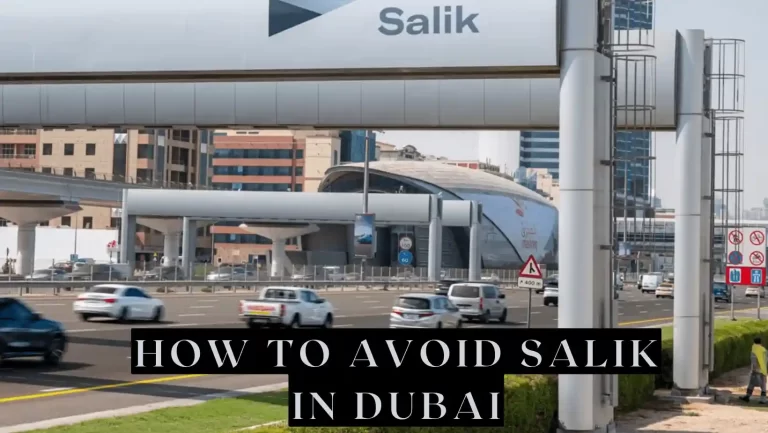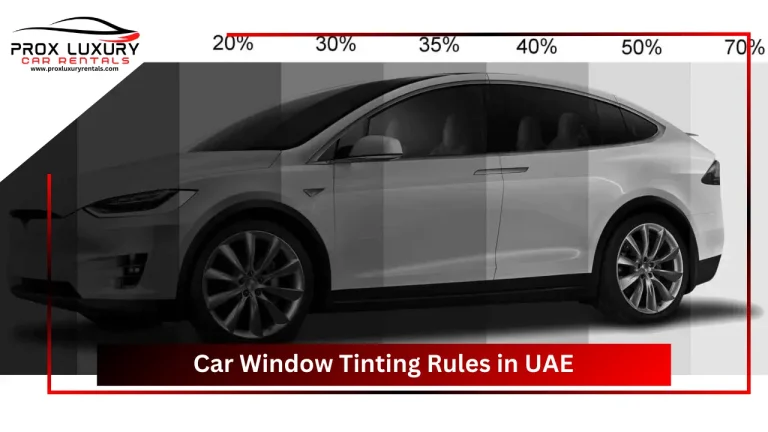Traffic regulations in residential zones are crucial for ensuring the safety of residents, especially children, pedestrians, and cyclists. Speed limits are implemented to manage traffic flow, minimize accidents, and create a peaceful living environment. This guide focuses specifically on the regulations and considerations surrounding speed limits in Dubai’s residential neighborhoods.
| Areas | Speed Limit Range (km/h) |
|---|---|
| Residential | 25 – 40 |
| Commercial | 40 – 60 |
| Main Roads | 60 – 80 |
| Famous Roads | Varies (often higher than 60) |
| Freeways | 60 – 120 |
The maximum Dubai road speed limit is from 110 to 120 km/h with a buffer of 20km/h as in other emirates except Abu Dhabi. The Dubai speed limits differ on the basis of the areas. For instance, the Sheikh Zayed Road speed limit is 100-120 km/h. Here is a list of street speed limits by Dubai Police.
| STREET | Redar Controlled Speed Limit (KM/H) | LANES |
|---|---|---|
| Al Nahda | 80 | 4/3 |
| Damascus | 80 | 3 |
| Al Quds | 80 | 4 |
| Tunisia | 80 | 3 |
| Sheikh Khalifa | 70 | 3 |
| Amman | 80/60 | 3/2 |
| Al Minaa | 80 | 4/3 |
| Beirut | 80 | 4/3 |
| Zaabeel second | 80 | 2/3 |
| Sheikh Zayed bin Hamdan Al Nahyan | 100/80 | 2/3 |
| Airport Tunnel-Beirut | 80 | 4 |
| Tripoli | 100/90 | 3/2 |
| Al Jumeira | 70 | 2 |
| Nad Al Shiba | 70 | 2 |
| Al Wasl | 70 | 3/2 |
| Baghdad | 80/70 | 3/2 |
| Um A Sheef | 70 | 2 |
| Al Manarah | 70 | 2 |
| Al Athar | 70 | 2 |
| Al Thunaya | 70 | 2 |
| Al Hadeeqa | 70 | 3/2 |
| Al Seif | 70 | 3/2 |
| Al Orouba | 70 | 3/2 |
| Towers | 70 | 3/2 |
| Muscat | 80 | 3/2 |
| Al Khail | 100 | 5 |
| Al Yalayes | 120/100 | 2 |
| Al Aweer | 100 | 2 |
| Emirates | 110 | 6 |
| Mohammad Bin Zayed | 110 | 2 |
| Expo | 100 | 7/6 |
| Al Ittihad | 100 | 4/3 |
| Ras Al Khor | 100 | 5/4 |
| Sheik Zayed | 120/100 | 4/3 |
| Al Rabat | 100 | 6 |
| Al Khawaneej | 100 | 5/4 |
| Al Amardi | 90/80 | 4/3 |
| Sheik Rashid | 100 | 3/2 |
| Hatta Main | 100/80 | 6/5 |
| Al Khaleej | 80 | 4/3 |
| Airport | 80 | 4/3 |
| Nad Al Hamar | 80 | 5/3 |
| King Salman Bin Abdulaziz (ASoufouh pervious ) | 70 | 3 |
| Al Soufouh 2 | 70 | 2 |
| Oud Metha | 80/60 | 4/3 |
| Um Hurair | 80 | 3 |
| Um Suqaim | 90 | 4/3 |
| Al Mankhoul | 80 | 2 |
| Al Manama | 80 | 3/2 |
| Al Maidan | 100/80 | 4/3 |
| Casablanca | 70 | 4/3 |
| Hessa | 100/80 | 5/4 |
| Al Mafraq | 70 | 3/2 |
| Dubai Financial | 80 | 5/4 |
| Al Qudra | 100 | 2 |
| Algeria | 80 | 3/2 |
| Tunisia | 80 | 3/2 |
| Dubai-Al Ain | 120/100 | 4/3 |
| Al Asayel | 80/70 | 3 |
| Qarn Al Sabkhah | 80 | 3 |
| Jumeira Palm | 60 | 2 |
| Seeh Shuaib | 80 | 3 |
This guide provides a comprehensive overview of speed limits in residential areas of Dubai, emphasizing the importance of safe driving practices for a harmonious and secure environment.
Speed Limits in Dubai
Dubai adheres to a tiered system of speed limits, with variations depending on road type. Here’s a breakdown:
- Residential Areas: Have the lowest speed limits to prioritize safety, typically set between 25 km/h and 40 km/h.
- Commercial Areas: Generally have higher speed limits than residential zones, often between 40 km/h and 60 km/h.
- Main Roads: Allow for higher speeds compared to residential areas, typically ranging from 60 km/h to 80 km/h
- Famous Roads: Major highways like Sheikh Zayed Road can have speed limits reaching 100 km/h or even 120 km/h in designated sections.
- Freeways: Generally have the highest limits, ranging from 60 km/h to 120 km/h
Following these designated limits is vital for the safety of all road users.
Definition of Residential Areas
Residential zones in Dubai are characterized by the presence of villas, apartments, and mixed-use developments with lower traffic volumes. Look for designated signage and markings on roads and maps to identify residential zones. As a driver in these areas, heightened awareness and responsible behavior are essential.
Maximum Speed Limit in Dubai’s Residential Areas
The legal framework for speed limits is established by Dubai’s Roads and Transport Authority (RTA). Official regulations typically set the maximum speed limit in residential areas between 25 km/h and 40 km/h, depending on the specific zone and its layout. Factors influencing these variations include:
- Population Density: Higher density areas may have lower speed limits to prioritize pedestrian safety.
- Presence of Schools and Parks: Special speed reductions are often implemented near these areas during designated times.
- Road Infrastructure and Condition: Narrower roads or those in poor condition may necessitate lower speed limits.
Speed Limits in Commercial Areas
Commercial zones typically have higher speed limits than residential areas, ranging from 40 km/h to 60 km/h. However, specific limits can vary depending on factors like road size, presence of pedestrian crossings, and proximity to residential neighborhoods.
Speed Limits for Light Vehicles
| AREA | Sped Limit | NOTES |
|---|---|---|
| Parking areas and service roads | 25 km/h | This is the standard limit for slow-speed maneuvering areas. |
| Urban single carriageway | 40 km/h – 60 km/h | The specific limit depends on the road design and signage. |
| Urban dual carriageway | 60 km/h or 80 km/h | Similar to single carriageways, the specific limit depends on signage. |
| Rural roads | 100 km/h – 140 km/h | Note: This is a revised range to reflect the more common speed limits on rural roads in the UAE. The 160 km/h limit is typically reserved for specific sections of highways like the Sheikh Khalifa Highway in Abu Dhabi. |
Speed Limits on Famous Roads
- Sheikh Zayed Road: This major artery has varying speed limits depending on the location. It can range from 80 km/h to 120 km/h.
- Jumeirah Beach Road: Speed limits on Jumeirah Beach Road typically fall between 60 km/h and 80 km/h.
- Jebel Ali Free Zone: Speed limits within the free zone can be higher than those in most areas of Dubai, reaching up to 100 km/h in designated zones. However, always double-check signage for specific limits.
- Al Khail Road: This road allows for speeds between 60 km/h and 100 km/h depending on the location.
- Dubai Al Ain Road: Speeds on this road typically range from 80 km/h to 100 km/h.
- Emirates Road: Expect speed limits on Emirates Road to vary between 80 km/h and 120 km/h.
- Sheikh Mohammed Bin Zayed Road: Speeds on this road can range from 100 km/h to 120 km/h.
- Dubai Bypass Road: This bypass allows for speeds between 80 km/h and 100 km/h.
- Al Barsha Road: Speeds on Al Barsha Road typically fall between 60 km/h and 80 km/h.
- Sheikh Rashid Road: This road allows for speeds between 60 km/h and 80 km/h.
Factors Influencing Speed Limits
Several factors influence the designated speed limit in a residential zone. These include:
- Population density: Higher density areas may have lower speed limits to prioritize pedestrian safety
- Presence of pedestrians and children: Areas with schools, parks, or high foot traffic often have lower speed limits.
- Road infrastructure and condition: Narrower roads or those in poor condition may necessitate lower speed limits.
- Proximity to schools and parks: Special speed reductions are often implemented near these areas during designated times
Enforcement of Speed Limits
The Dubai Police actively enforce speed limits through regular patrols. Additionally, advanced technology like radars and smart cameras are used to monitor speeding throughout the city. Violating speed limits carries significant fines and potential license suspension.
Safety Measures and Initiatives
Dubai prioritizes road safety with various initiatives:
- Awareness campaigns educate drivers about the dangers of speeding and the importance of adhering to speed limits.
- Installation of speed bumps and traffic calming measures are implemented in high-risk areas to deter speeding.
- Community engagement through resident associations and public outreach programs fosters collaborative efforts for safer neighborhoods.
Conclusion
This guide has emphasized the importance of adhering to speed limits in Dubai’s residential areas. By understanding the regulations, recognizing the influencing factors, and embracing responsible driving practices, we can all contribute to safer and more vibrant communities.




